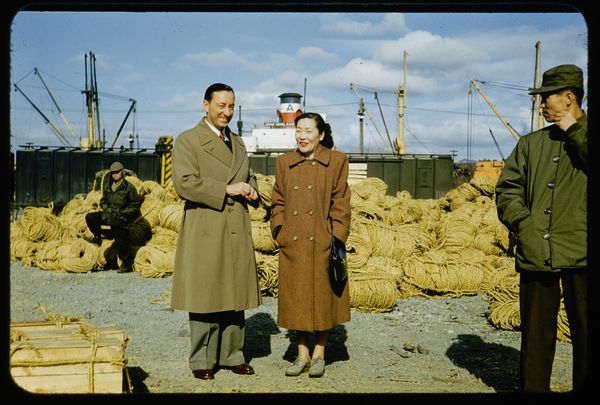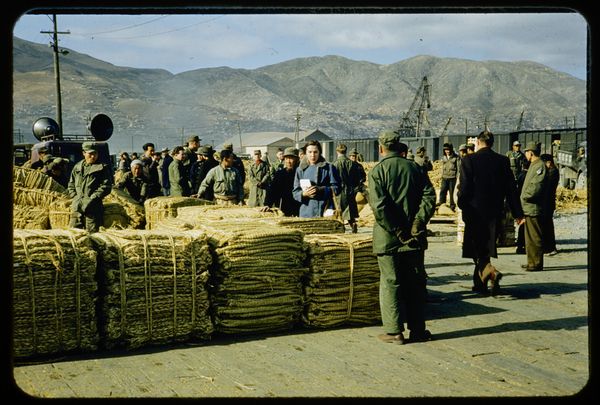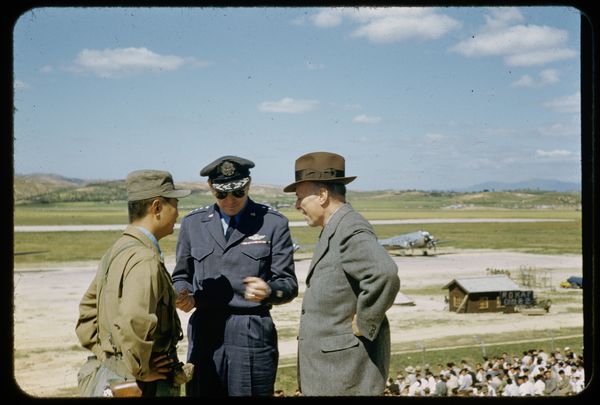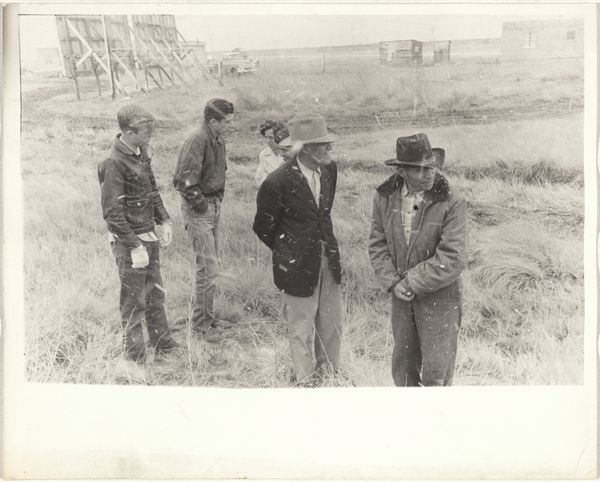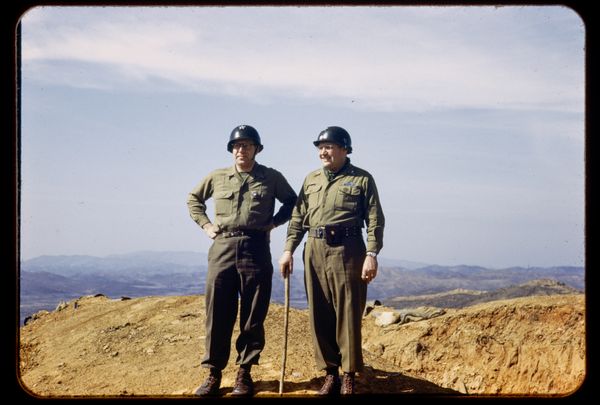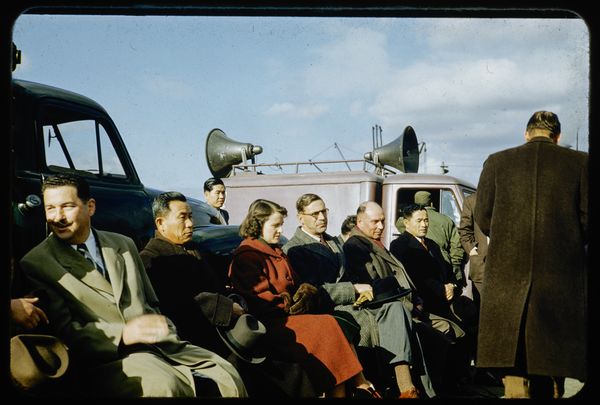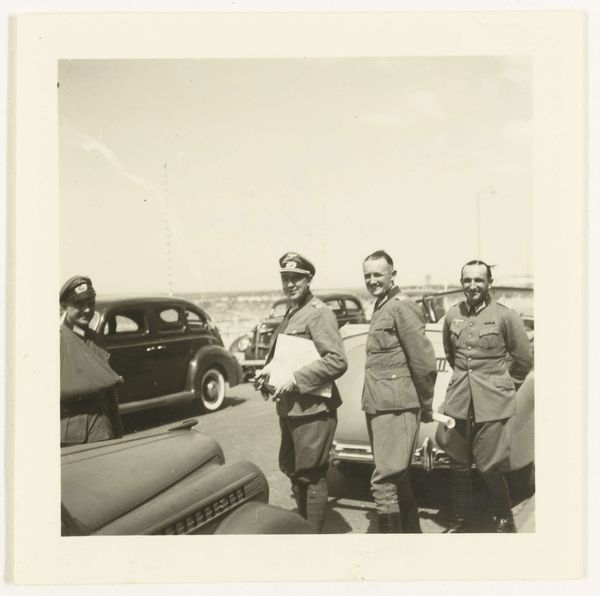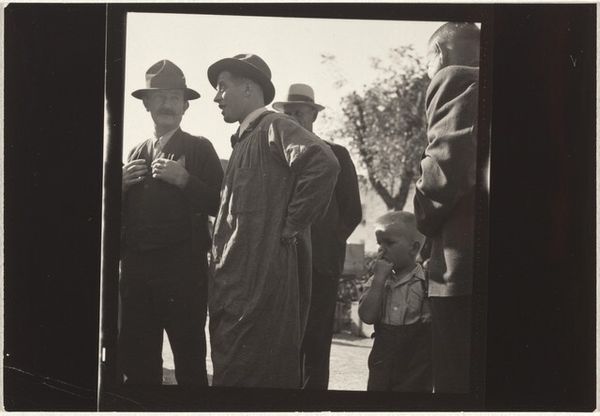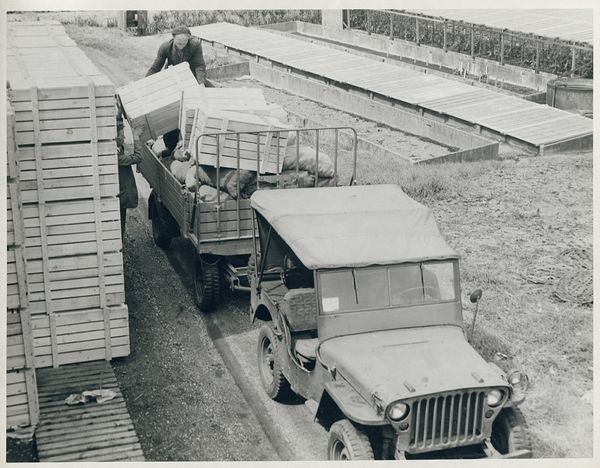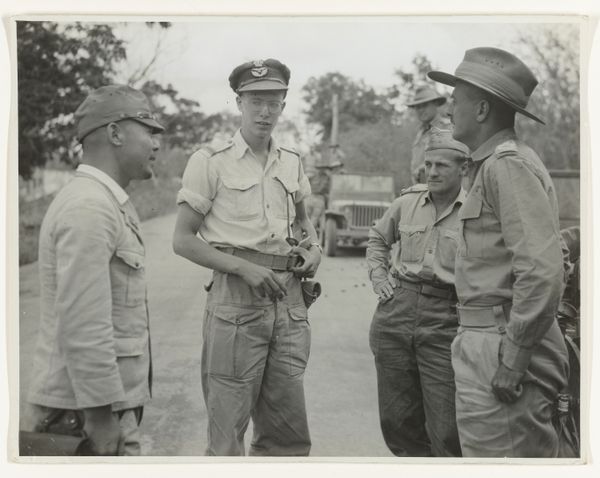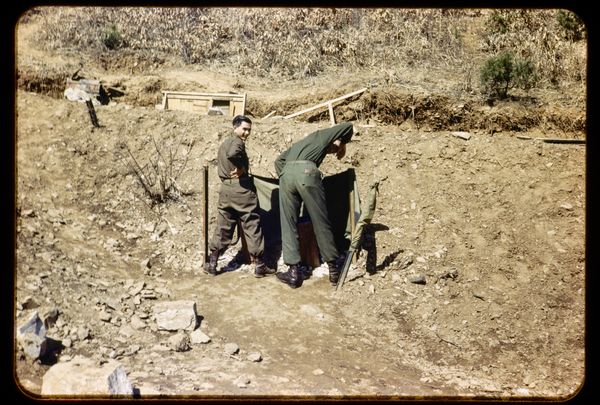
c-print, photography
#
portrait
#
landscape
#
c-print
#
photography
Dimensions: height 5 cm, width 5 cm
Copyright: Rijks Museum: Open Domain
Editor: So, here we have “De heer Kingsley, hoofd UNKRA en twee militairen,” or Mr. Kingsley, Head of UNKRA and Two Military Men, a C-print photograph taken sometime between 1951 and 1953. Looking at the composition, I'm struck by the almost staged feel of it. What is your take on this image? Curator: It’s important to see this photograph through the lens of post-war reconstruction. UNKRA, the United Nations Korean Reconstruction Agency, was instrumental in rebuilding Korea after the devastation of the Korean War. This image, in that context, presents a very specific narrative about international aid. Editor: Could you expand on that? How does the image contribute to the historical narrative? Curator: Note the deliberate framing. Kingsley, the civilian leader, is centered and distinct in his suit, positioned as the figurehead. The uniformed military personnel flank him, suggesting a sense of security and order brought by the UN presence. In the background are materials likely crucial for the reconstruction efforts – note the railways as a clear symbol of trade routes. How might a viewer at the time have interpreted this photograph? Editor: Possibly as reassurance that the UN was effectively leading reconstruction efforts. Almost like a propaganda image promoting the success of UNKRA. The ropes or bales are also interesting given the context. What might these signify? Curator: Perhaps they are materials destined for infrastructure projects, or potentially relief supplies for the civilian population. These elements underscore the message of restoration and rebuilding that the UN sought to project. It makes me wonder, where was this image circulated? Editor: That’s a great point. Considering that, it does prompt a reevaluation of its intention and impact. I hadn’t fully appreciated the layered messaging embedded in it. Thanks. Curator: Understanding the context is crucial. By exploring the image as a form of visual communication rooted in the history and politics of its time, we reveal deeper meanings.
Comments
No comments
Be the first to comment and join the conversation on the ultimate creative platform.
